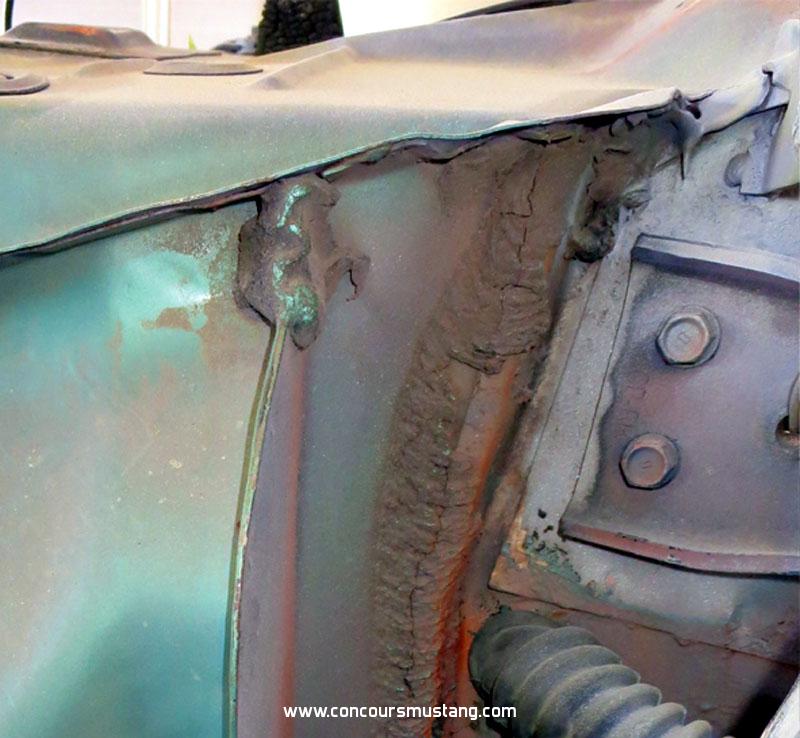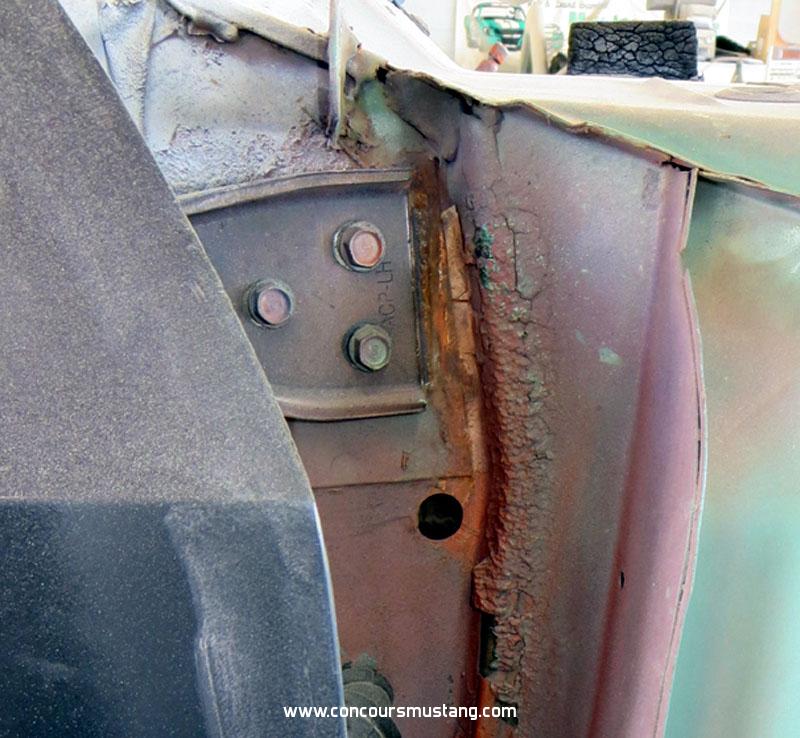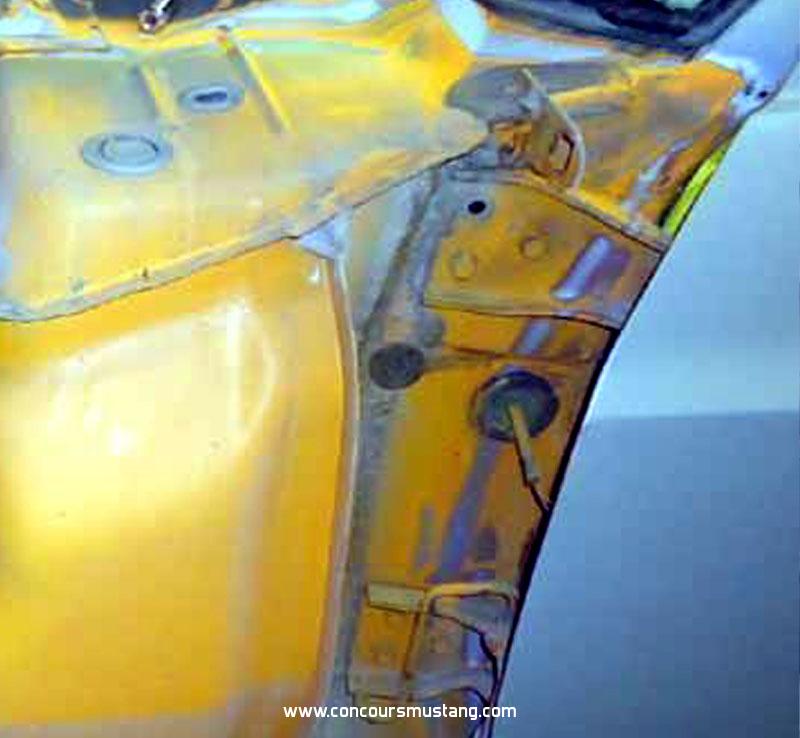Changed the title slightly to reflect your area of focus.
This was a somewhat difficult assignment to find illustrations of what they did at the plant since this area is difficult to see on assembled cars and on unassembled cars the hinges are often removed leaving only a patch of surface rust (hinges installed prior to any paint application) and that rust pattern has often expanded past the hinge area
What I found. Typically on the upper hinge there was a small bead of sealant applied to the top edge and forward edge in a continuous strip. It appears that this was applied after the hinge and door were installed and aligned. If the spray on sealant in the forward door jamb over the side cowl panel to A pillar seam was wide enough it too would help seal the forward facing edge of the hinge on top and bottom. Haven't yet found sealant on the lower hinge except for those incidents where that spray on sealant was wide enough
Note that the amount of exterior color on this car is much less than we typically see. Painted was too quick and didn't provide the amount of cover typically required
Spray sealant has flaked and fallen off the hinge to a pillar edge

It appears that the worker applying the spray sealant on this side kept the spray trigger depressed and he removed the wand and moved it over the top edge of the top hinge. Looking at all the examples this is not typical and not something that should be copied from another example like this though it would be nice to reproduce if you owned this particular car and it had been documented for this one car. Notice (same car above) its not present on the other side

Example from another 69 Dearborn car. Spray on sealant at forward edge of hinge much wider and heavier on this example
